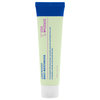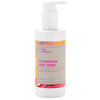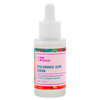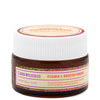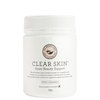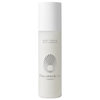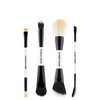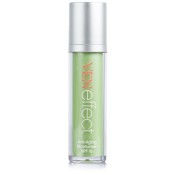
Many suffer from surprise pimple flareups and cystic acne during the days leading up to the first day of their period, which is known as premenstrual syndrome, or PMS. You can feel physical and emotional symptoms from the monthly affliction, but do you know what’s happening on a biological level? Many women believe the cramps, breakouts, and mood-swings occur from a hormonal increase—you’ve probably heard the phrase “I’m so hormonal” before. But surprisingly, PMS symptoms really occur from a monthly hormone decline! Louisville, Kentucky-based obstetrician and gynecologist Rebecca Booth, M.D., explains to us how PMS manifests in our body and on our skin.
HOW DOES PMS OCCUR?
When your body realizes it’s not pregnant, it stops secreting three important hormones—estrogen, testosterone, and progesterone—and sends their levels spiraling down dramatically. Since progesterone only affects you during pregnancy, your body primarily feels strong estrogen and testosterone withdrawals, which cause uncomfortable symptoms of PMS leading up to the first day of your period. Dr. Booth humorously calls this stage Minerva, referencing the stoic Roman goddess. "The brain adapts to the hormones throughout the month, so the loss of them creates an instability," says Dr. Booth. "These hormones also trigger a decline in neurotransmitters such as seratonin and dopamine, the chemicals responsible for stress and mood." These changes can make us feel sluggish and tired, and often cause migraines. But we see the most common side effect on our skin: A dull complexion.
HOW DOES PMS MANIFEST IN OUR SKIN?
During the hormone drop—around five days before the beginning of our menstrual cycle—testosterone becomes dominant over estrogen. Estrogen enhances everything we think of as feminine—it gives our complexion a radiance, reduces pore size, and works with estrogen receptors in the dermis and epidermis to increase production of hyaluronic acid, collagen, and elastin. Testosterone increases sebum production and adds lubricity to hair and skin, but conversely increases pore size to secrete more oil. "During the reset phase, there's a ratio flip with testosterone and estrogen, and that's when we develop a more classic male appearance," explains Dr. Booth. "Hair grows in areas we don't want it to, and skin breaks out from excess oil production." Progesterone, the hormone dominant after ovulation, doesn't really affect the skin if you're not pregnant. After a few days, hormone levels slowly increase, and your body begins the biological process all over again.

Dr. Rebecca Booth is one of Louisville, Kentucky's most cutting edge doctors, the author of The Venus Week: Discover the Powerful Secret of Your Cycle...At Any Age, and Co-founder of VENeffect anti-aging skin care. Recognized as a leader in women's health and hormonal wellness, Dr. Booth has made appearances on The Today Show and major media. She is a fellow in the American College of Obstetricians & Gynecologists, the American Society for Reproductive Medicine, and the International Society for Clinical Densitometry, among others.
Featured Products
You Might Also Like
-

Expert Skin Care Advice
All About Ears
- 77
-

Expert Skin Care Advice
What's That Spot?
- 32
-

Expert Skin Care Advice
3 Simple Tips to Keep Your Post-Workout Skin Clear
- 3127
-
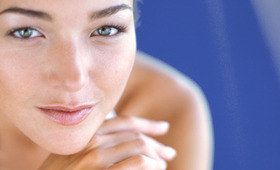
Expert Skin Care Advice
Discover Your Sexiest Week of the Month!
- 218
-
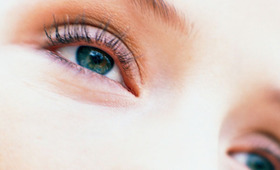
Wellness
What are Those Bumps Under Your Eyes?
- 492
-

Expert Skin Care Advice
Skin-Saving Tips That Can Change Your Complexion
- 1711
-

Shampoo
Beat Psoriasis Like Kim Kardashian!
- 69
-
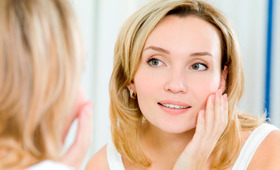
Expert Skin Care Advice
Beauty Myth: Does Your Skin Purge Impurities?
- 52




 Dr. Rebecca Booth is one of Louisville, Kentucky's most cutting edge doctors, the author of The Venus Week: Discover the Powerful Secret of Your Cycle...At Any Age, and Co-founder of VENeffect anti-aging skin care. Recognized as a leader in women's health and hormonal wellness, Dr. Booth has made appearances on The Today Show and major media. She is a fellow in the American College of Obstetricians & Gynecologists, the American Society for Reproductive Medicine, and the International Society for Clinical Densitometry, among others.
Dr. Rebecca Booth is one of Louisville, Kentucky's most cutting edge doctors, the author of The Venus Week: Discover the Powerful Secret of Your Cycle...At Any Age, and Co-founder of VENeffect anti-aging skin care. Recognized as a leader in women's health and hormonal wellness, Dr. Booth has made appearances on The Today Show and major media. She is a fellow in the American College of Obstetricians & Gynecologists, the American Society for Reproductive Medicine, and the International Society for Clinical Densitometry, among others.